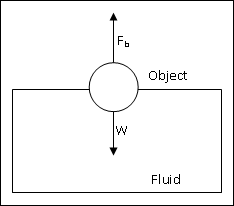Scientifics
Whatever Floats Your Boat?
Maya Winters
Yes, yet another scientific article from me but at least I keep them (relatively) brief! So, this time I'm going to start with the very obvious facts that you likely know already:
1) Boats tend to be made of steel.
2) Dense things sink in water (i.e. things with a greater density than water).
3) Steel is denser than water.
4) Boats float.
Now, statement 4) appears to contradict facts 2) and 3) but boats definitely don't sink, so what's going on?
Before answering this question fully I want to define a couple of symbols, etc. to make the below discussion easier:
ρ(steel) = 7850kg/m^3
ρ(water) = 1000kg/m^3
From this we can see that steel is 7.85 times denser than water and so going on the simple observation of 2), boats would sink.
The answer behind this question is pretty simple, most of you probably realize that the boat isn't entirely made up of steel and contains large amounts of air. However, I'd like go into some of the actual proper physics behind the idea (nothing too scary though, I swear).
-------------------
Buoyancy
Definition (of sorts): The upwards force on an object produced by the surrounding fluid (a liquid or gas) in which it is partially immersed. (1)
The force is caused by a pressure difference between the top of the object and the bottom and it is indeed this buoyancy force that explains why boats (as well as balloons, etc.) can float.
Another way of looking at it is that normally, an object is only acted on by a gravitational force. However, when it is partially immersed in a fluid, let's say water, it makes the object 'lighter' – this is why we can swim through water but not air!
If an object is LESS dense than the fluid it is in, it will float.
If the object and the fluid have equal densities, the object is 'weightless.'
If an object is MORE dense than the fluid it is in, it will sink.
Archimedes Principle
This states that the buoyant force that acts on an object is related to the volume of fluid displaced by the object as follows:
Force(buoyant) = - gravitational acceleration x submerged volume x density of fluid
The Archimedes Principle only holds if surface tension and any compressibility of the object can be neglected and that is assumed for the rest of this article.
The other force acting on the object is due to its weight (mass of the object x gravitational acceleration). Now, whether the object sinks or floats depends on whether the buoyant force or the weight, W, is larger.

Now that the idea of there being a weight force and a buoyant force which determines if the boat does or doesn't float, I'll quickly explain why a boat can capsize or tip over (mostly for small boats!). The buoyant and weight force each act on a specific point–the centre of buoyancy and centre of gravity respectively. It is the relevant positions of these points that define if the boat will tip: the boat retains stability as long as the centre of gravity is higher than the centre of buoyancy. Otherwise, you're going to get wet!
-------------------
Anyway, hopefully now you understand a little bit more (or have perhaps just been reminded) why boats do float and in fear of your brains exploding I'm going to stop myself going into any more complications and end it there for this issue.
Sources:
1. http://en.wikipedia.org/wiki/Buoyancy
2. http://www.boatsafe.com/kids/021598kidsques.htm